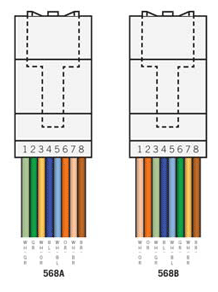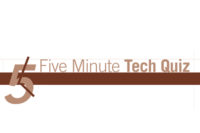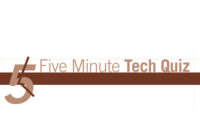1. The following are all methods of connecting computers to a network except:
a. star.
b. ring.
c. bus.
d. link.
e. All are methods of connecting computers
2. By far the most common method of network cabling is
a. coaxial cables.
b. optical fiber cables.
c. UTP.
d. radio waves/wireless.
3. The reduction in signal level as it passes along a cables usually expressed in dB (decibels) is called
a. backscattering.
b. resistance.
c. attenuation.
d. optical loss coefficient.
4. Which of the following is not a fiber optical connector?
a. SC
b. ST
c. LD
d. LC
5. The difference between T568A and T568B wiring is that
a. pairs 1 and 2 are reversed.
b. pairs 2 and 3 are reversed.
c. pairs 1 and 2 – and 3 and 4 are reversed.
d. pairs are ordered 1,2,3,4 and 4,3,2,1 respectively.
6. For proper performance, it is imperative to maintain proper twists within _________ of the termination point on Cat5E/6 cable.
a. ¼ in.
b. ½ in.
c. ¾ in.
d. 1 in.
13. An alarm panel used to transmit over an IP network is connected to the network via a
a. crossover cable.
b. cross pair cable.
c. 568 straight cable.
d. Cat 3 cable with RJ45 terminations.
7. The purpose of twisting the pairs of Cat5E/6 cable is to
a. increase attenuation, crosstalk and impedance.
b. decrease noise.
c. increase wire strength when pulling through conduit.
d. decrease attenuation, crosstalk and impedance.
8. The EIS/TIA 568 permitted wiring distance for 100 ohm unshielded twisted pair cable for data is
a. 1000 ft.
b. 232 ft.
c. 330 ft.
d. 4000 ft.
9. When a technician is installing a “structured cabling system” he is required to
a. work with other vendors to achieve the final task.
b. direct the other vendors to achieve the final task.
c. follow the 568 standard.
d. use standardized components.
e. All of the above
11. Although not required in code, surge suppressors are a necessity for protecting all outdoor runs of coaxial cable.
a. True
b. False
10. Messenger cables are
a. used to send signals from one end of the network to another.
b. are any cables used to transmit data.
c. are specified in Article 800 of the NEC for communication.
d. are specified in Article 321 of the NEC and are for support of data cables.
12. The architecture or layout of a network is called a/an
a. star.
b. bus.
c. Ethernet.
d. topology.
e. ring.
14. In order to connect an alarm system to a network for transmitting an alarm, it must be programmed with
a. a MAC address.
b. an account number.
c. an IP address.
d. All of the above
e. None of the above. Alarm panels are preprogrammed by the manufacturer.
15. An alarm panel transmitting via a “radio” or a “cellular” device does not transmit over a network since it is direct.
a. True
b. False
5-Minute Tech Quiz Answers
Here are the answers to 5-Minute Tech Quiz
1. d
2. c — Unshielded twisted pair cables are the most-used cable in networking.
3. c
4. c
5. b — Wiring for both types of connections are specified by the standard.
6. b
13. c — A straight-through cable is used to connect from the alarm panel to the hub or switch to send the data through the network.
7. d — The twists help to improve the quality of the data transmission. As in the answer to question 6, the twists must be maintained and are critical to performance.
8. c
9. e — Working together with other contractors, as well as following plans and specifications, are critical to properly commissioning a network.
11. a
10. d
12. d
14. c — Although a network device has a MAC address and an account number is also required, for the network, an IP address must be programmed into the unit.
15. b

|
What’s Wrong With This?
A technician tried to connect his alarm panel to the IP network but couldn’t get a signal to the central station. He verified the IP address, and the programming in the alarm panel. He tested continuity of the cable. He looked at the two ends of the cable. Can you see what he did wrong?
Answer to: What's Wrong With This?
While it wouldn’t matter which configuration he used, the technician would have to make certain that both ends of the cable were terminated in the same fashion. 568A is the standard in pinning assignments, however, 568B is an accepted alternative because it was a scheme widely used by AT&T.




